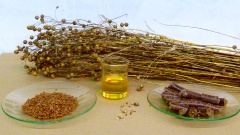Difference between revisions of "Linseed oil"
| Line 23: | Line 23: | ||
| 15 - 26°C | | 15 - 26°C | ||
| 4 - 6 weeks | | 4 - 6 weeks | ||
| − | |}<br> | + | |}<br><br> |
| − | + | {| | |
| − | Designation | + | |- |
| + | |style="width:150px;"|<b>Designation</b> | ||
| + | |style="width:300px;"|<b>Temperature range</b> | ||
| + | |- | ||
| + | | Loading temperature | ||
| + | | 23°C. | ||
| + | |- | ||
| + | |Travel temperature (favourable temperature range) | ||
| + | | 20°C (15-26°C) | ||
| + | |- | ||
| + | | Solidification temperature | ||
| + | | -18 / -27°C (hot pressed) | ||
| + | |- | ||
| + | | Pumping temperature | ||
| + | | 23°C | ||
| + | |}<br><br> Temperature range | ||
Loading temperature 23°C | Loading temperature 23°C | ||
Travel temperature (favourable temperature range) 20°C (15 - 26°C) | Travel temperature (favourable temperature range) 20°C (15 - 26°C) | ||
Revision as of 09:11, 6 August 2013
| Infobox on Linseed oil | |
|---|---|
| Example of Linseed oil |  |
| Facts | |
| Origin | - |
| Stowage factor (in m3/t) | 1,72 m3/t (in drums) |
| Humidity / moisture | - |
| Ventilation | - |
| Risk factors | See text |
Linseed oil
Description / Application
Linseed oil, also known as flaxseed oil, is a colourless to yellowish oil obtained from the dried ripe seeds of the flax plant. The oil is obtained by pressing, sometimes followed by solvent extraction. Due to its high levels of α-Linolenic acid (a particular form of omega-3 fatty acid), it is used as a nutritional supplement.
Linseed oil is a drying oil, meaning it can polymerize into a solid form. Due to its polymer-forming properties, linseed oil is used on its own or blended with other oils, resins, and solvents as an impregnator and varnish in wood finishing, as a pigment binder in oil paints, as a plasticizer and hardener in putty, and in the manufacture of linoleum. Linseed oil use has declined over the past several decades with increased availability of synthetic alkyd resins—which function similarly but resist yellowing.
Linseed oil is an edible oil marketed as a nutritional supplement. In parts of Europe, it is traditionally eaten with potatoes and quark (cheese). It is regarded as a delicacy due to its hearty taste, which spices the bland quark.
See Bulk Oils and Fats
Shipment / Storage / Risk factors
Linseed oil is extracted from linseed and (mostly) shipped in bulk (or in drums).
It is liable to loss of volume by adherence to tanks. Raw linseed oil may arrive in a condition as though mixed with water, and with an emulsified appearance. This is due to the oil, after processing, not standing long enough prior to shipment. A considerable quantity of solid vegetable matter in suspension may be present, but on being allowed to settle for a period of about two months, the solid matter will fall to the bottom of the oil, which can then be run off. The oil thickens on exposure to air, darkening and acquiring a pronounced taste.
Maximum duration of storage is as follows:
| Temperature | Max. duration of storage |
| 15 - 26°C | 4 - 6 weeks |
| Designation | Temperature range |
| Loading temperature | 23°C. |
| Travel temperature (favourable temperature range) | 20°C (15-26°C) |
| Solidification temperature | -18 / -27°C (hot pressed) |
| Pumping temperature | 23°C |
Temperature range
Loading temperature 23°C Travel temperature (favourable temperature range) 20°C (15 - 26°C) Solidification temperature -18 - -27°C (hot-pressed) Pumping temperature 23°C
Under normal transport conditions, linseed oil is liquid and therefore need not be heated. However, if extremely low temperatures should arise during the voyage which are in the solidification range, the oil has to be heated to prevent losses in quality and to achieve pumpability.











